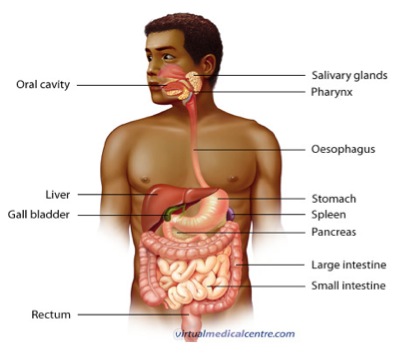At least 1 in 4 people in the U.S. have stomach- or intestinal problems that are so severe that they interfere with the person’s daily activities and quality of life. Problems with the intestines or digestion are collectively referred to as Gastrointestinal (or GI) Disorders.
The following are common types of gastrointestinal conditions found in men. Browse through each type to find out information such as symptoms, treatment options and prevention tips for each condition/disease.
CROHN’S DISEASE / IRRITABLE BOWEL DISEASE (IBD)
CHRONIC CONSTIPATION
FUNCTIONAL GASTROINTESTINAL DISORDER (FGID)
GASTRIC CANCER
GASTROESOPHAGEAL REFLUX DISEASE (GERD)
IRRITABLE BOWEL SYNDROME (IBS)
ULCERATIVE COLITIS (IBD)
Functional Gastrointestinal Disorders (sometimes called FGIDs), which are the result of abnormal functioning of the GI tract (that’s the system of connected organs that starts at the mouth and ends at the anus.) FGIDs are often hard to diagnose because even though they produce frequent symptoms, there is no visible damage to the GI tract, and there are no screening tests to identify them.
GI Diseases (sometimes referred to as Inflammatory GI diseases) also produce symptoms, but they are the result of something being physically wrong or damaged somewhere in the GI tract, such as cancer, growths, ulcers, infection, or inflammation. GI diseases are often diagnosed with the help of x-rays, blood tests, and other tools.
In the United States, women are 3 or 4 times more likely than men to see a primary care doctor or a specialist for GI-related problems. If you think you have any of these conditions, we strongly encourage you to schedule an appointment with a healthcare provider right away.
A QUICK TOUR OF YOUR GASTROINTESTINAL (GI) TRACT

The GI tract is a hollow tube that takes food from your mouth, down your throat (esophagus), into your stomach, and on to the intestines. Along the way, your body extracts nutrients from the food and turns them into the fuel you need to walk, talk, think, read, play, and everything else you do. After that, the GI tract takes what’s left over and moves it down to your rectum where it eventually leaves your body as feces.
HOW FOOD IS DIGESTED: FUCTIONS OF THE GI TRACT
1st: Food is ingested into the mouth where it is made into smaller pieces and moistened.
2nd: Food is digested in the stomach and small intestines.
3rd: The large intestine reabsorbs excess water.
4th: Undigested material and secreted waste products are excreted from the body through the passing of feces.
As with other chronic diseases, the symptoms may appear in periods of flare-ups and then subside for a period of time.
Although your provider may want you to have certain tests, most of what he or she will use to diagnose your condition will come from what’s called a patient history—the information you provide about your symptoms. Before meeting with your provider, it’s as good idea to write down in a notebook the following information:
- What your symptoms are and how long you’ve had them
- Anything you think triggers your symptoms, makes them worse, or relieves them
If your healthcare provider determines that you have a GI Disorder, he or she may refer you to a Gastroenterologist (a GI doctor). Gastroenterologists go through the same medical training as other physicians, but they also spend several more years studying and learning to treat conditions and diseases of the digestive tract.